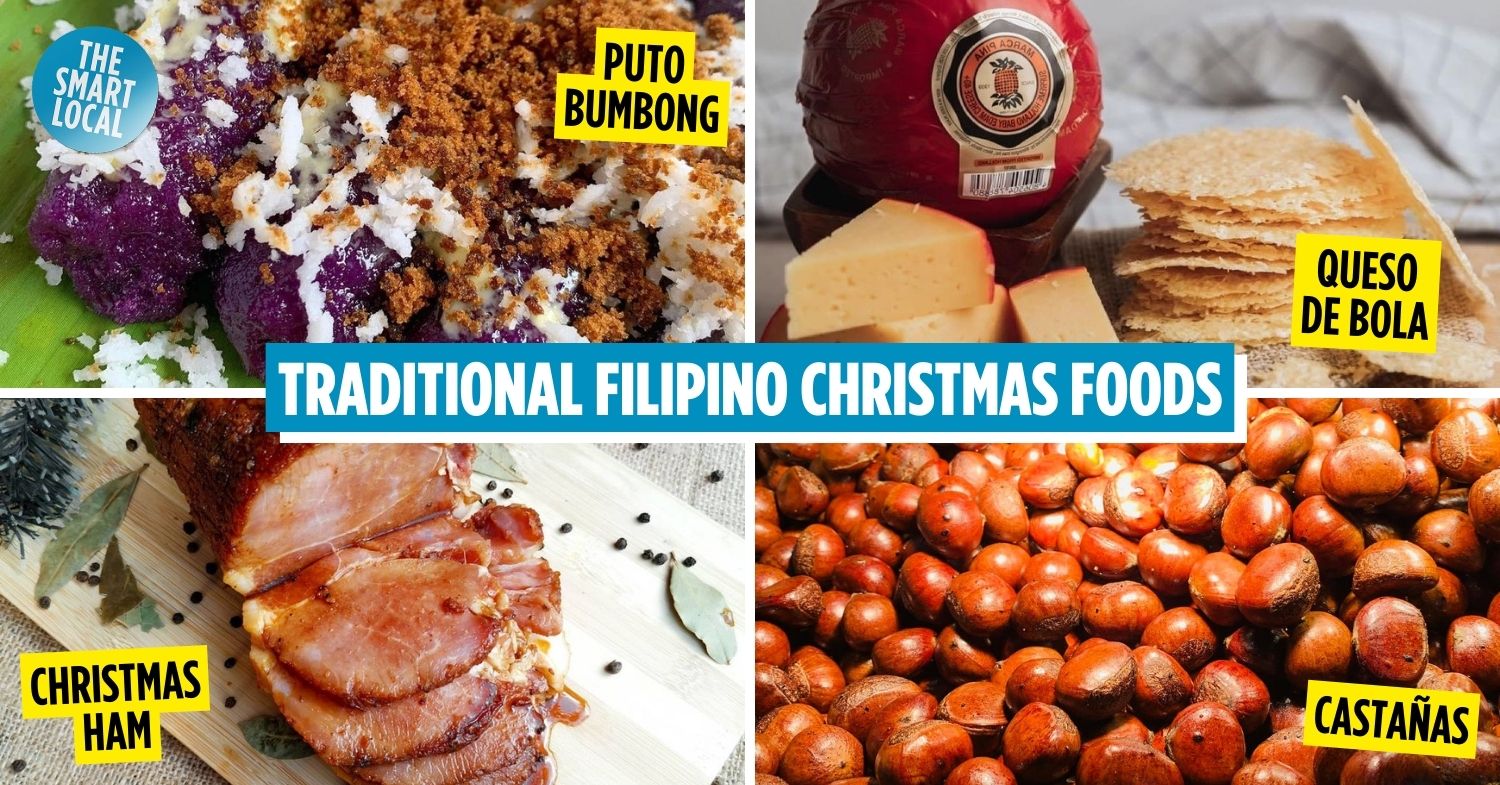Christmas season food in the Philippines
There are two things Filipinos love the most – food and Christmas. So when it’s Christmas season, we go all out and prepare dishes we don’t usually get at any other time of the year.
If you’re interested in Filipino culture or you’re a Filipino who wants to see what traditional Christmas food you haven’t had, we’ve listed some traditional Filipino Christmas foods, from snacks to appetizers to main dishes to desserts.
Table of Contents
- Christmas season food in the Philippines
- 1. Puto bumbong – purple rice cakes steamed in thin bamboo tubes
- 2. Bibingka – rice cake topped with coconut strips, salted egg slices, and cheese
- 3. Castañas – wok-roasted chestnuts commonly sold on the streets
- 4. Queso de bola – round Edam cheese coated in red paraffin wax
- 5. Christmas ham – cured, smoked pork with pineapple glaze
- 6. Pancit – a Filipino celebration staple that symbolizes long life
- 7. Filipino-style spaghetti – well-loved pasta dish by kids and kids-at-heart
- 8. Lumpiang Shanghai – crowd-favorite ground pork egg rolls
- 9. Lechon – whole pig roasted over charcoal
- 10. Barbecue – different parts of pork and chicken grilled in skewers
- 11. Embutido – Filipino meatloaf that can have a polarizing ingredient
- 12. Menudo – pork and liver stewed in tomato sauce
- 13. Kaldereta – tomato-based goat meat stew
- 14. Rellenong bangus – stuffed milkfish that’s a labor of love
- 15. Lechon manok – Filipino-style roasted chicken
- 16. Leche flan – custard dessert with a clear caramel glaze
- 17. Salad – sweet, fruity, and cool dessert of different types
- Traditional Filipino Christmas foods
1. Puto bumbong – purple rice cakes steamed in thin bamboo tubes
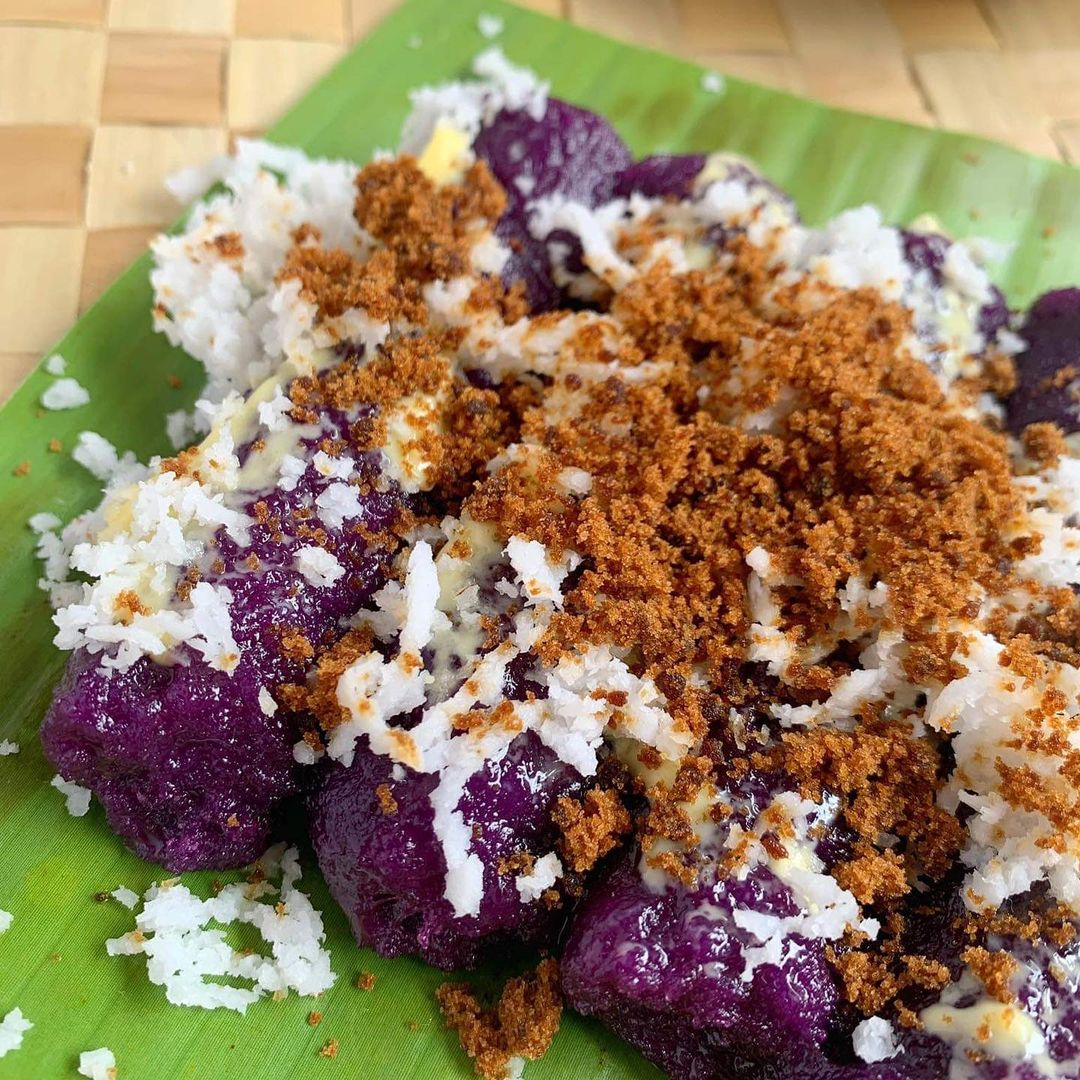
Image credit: @lisabibingka via Instagram
The traditional Filipino Christmas food puto bumbong is usually sold near churches during simbang gabi, the series of evening or early morning masses that happens for 9 days before Christmas.
Each of these purple rice cakes steamed in a bumbong, a short, thin bamboo tube. Traditionally, it was made with pirurutong, an heirloom black glutinous rice variant that becomes purple when cooked but is now substituted with regular glutinous rice and purple food coloring.
This sweet snack is usually topped with butter or margarine, coconut shavings, and muscovado sugar and is served in threes on a banana leaf.
2. Bibingka – rice cake topped with coconut strips, salted egg slices, and cheese
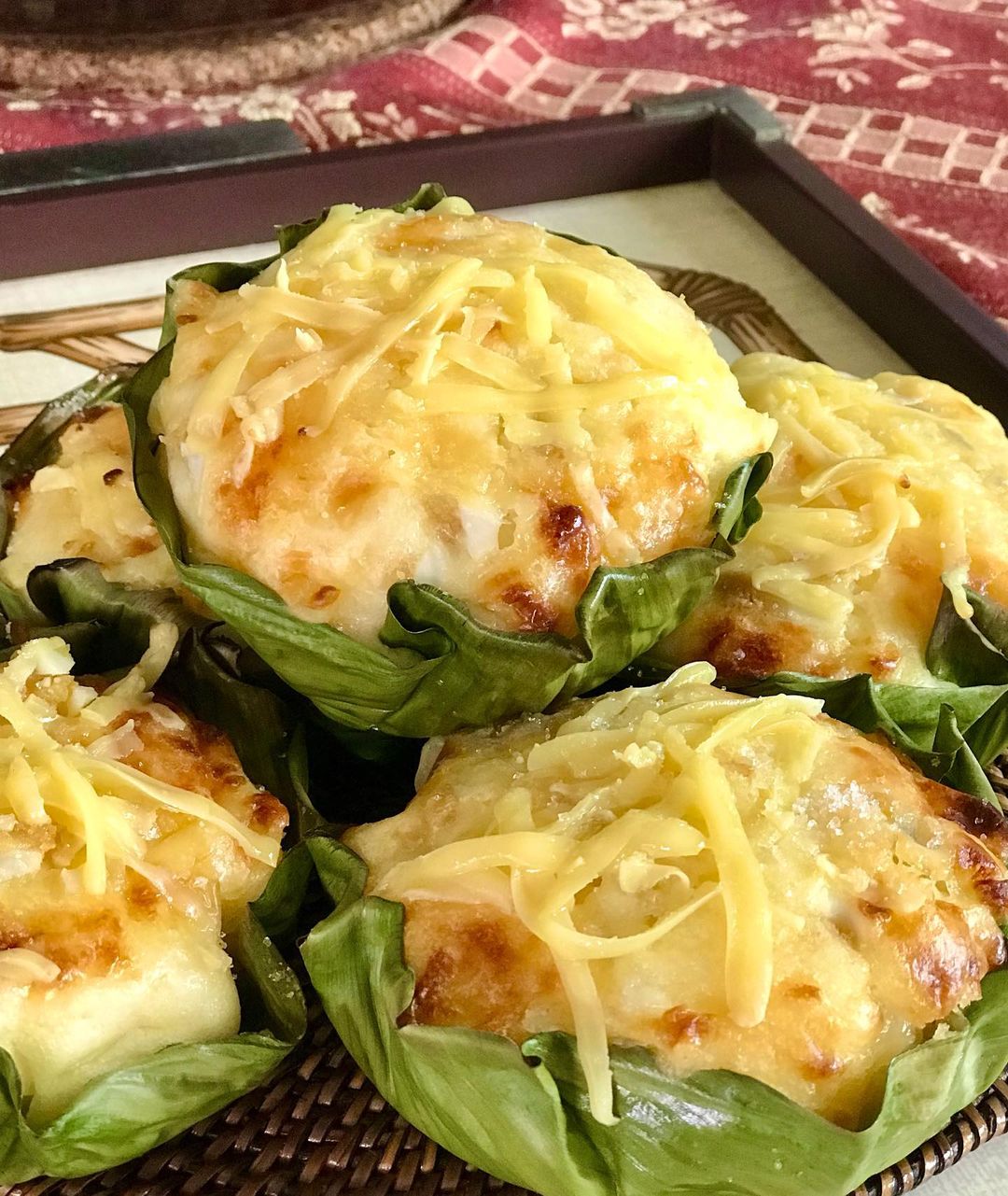
Image credit: @margot31 via Instagram
Like puto bumbong, bibingka is another traditional Filipino rice cake that is commonly sold near the church during simbang gabi. While it can be found in traditional markets and even malls during the rest of the year, it’s also a popular Christmas season food.
Bibingka is made of powdered glutinous rice, coconut milk, eggs, sugar, and margarine. Traditionally, it is cooked on a clay pot lined with banana leaf, with charcoal over and under the pot to cook the contents evenly.
This slightly sweet, filling rice cake is usually topped with coconut strips, salted egg slices, and cheese, giving it a salty-sweet flavor.
3. Castañas – wok-roasted chestnuts commonly sold on the streets
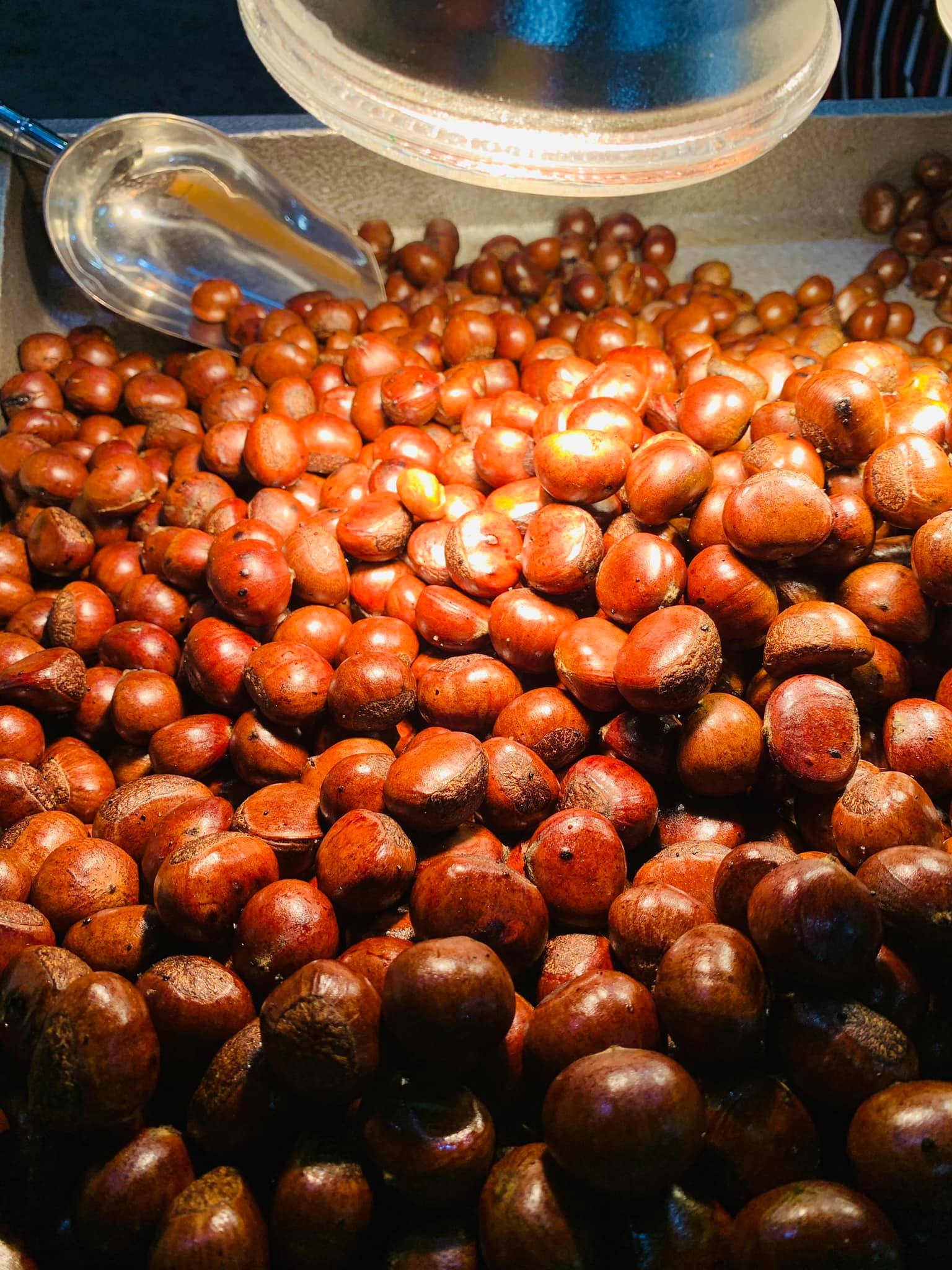
Image credit: Classic Castañas via Facebook
To many Filipinos, the nutty aroma of castañas or roasted chestnuts signifies that Christmas is fast approaching.
In the Philippines, these are sold on the streets, in markets, or malls, especially around December. Traditionally, they are cooked in huge woks where they are sold, but they can also be oven-roasted.
This Christmas delicacy gives a sweet, smoky, and nutty taste and is best enjoyed warm. However, it can come with a steep but well-worth-it price tag.
4. Queso de bola – round Edam cheese coated in red paraffin wax
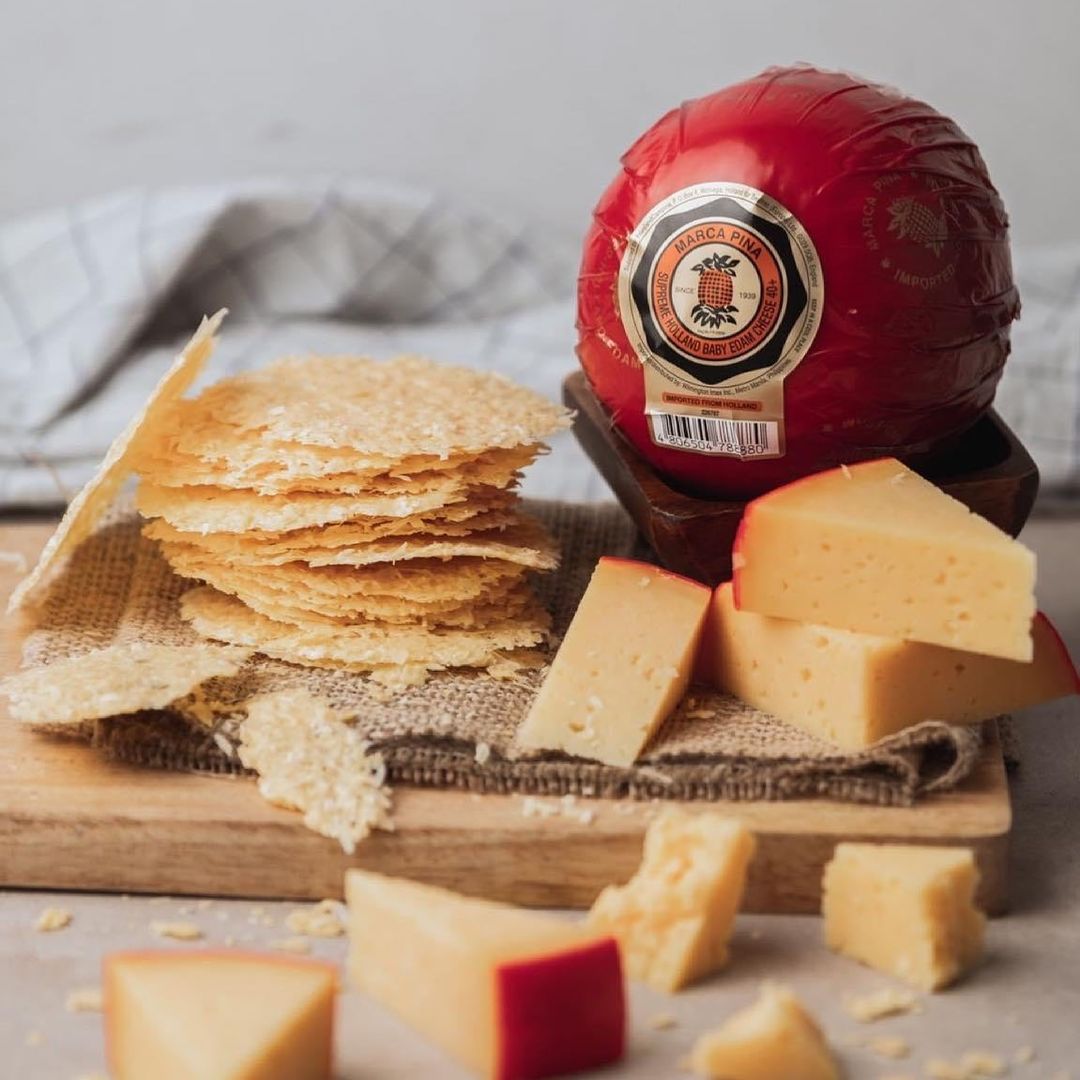
Image credit: @marcapinacheese via Instagram
Queso de bola literally translates to “ball of cheese” in English. It’s a round, semi-hard Edam cheese with a salty and nutty flavor and covered in red paraffin wax.
You can add it to sandwiches with Christmas ham or add it to your pasta dish. If you enjoy eating cheese, you can also eat queso de bola by itself.
This cheese is available in grocery stores mostly around Christmastime but you may also be able to find it at the mall during the off-season.
5. Christmas ham – cured, smoked pork with pineapple glaze
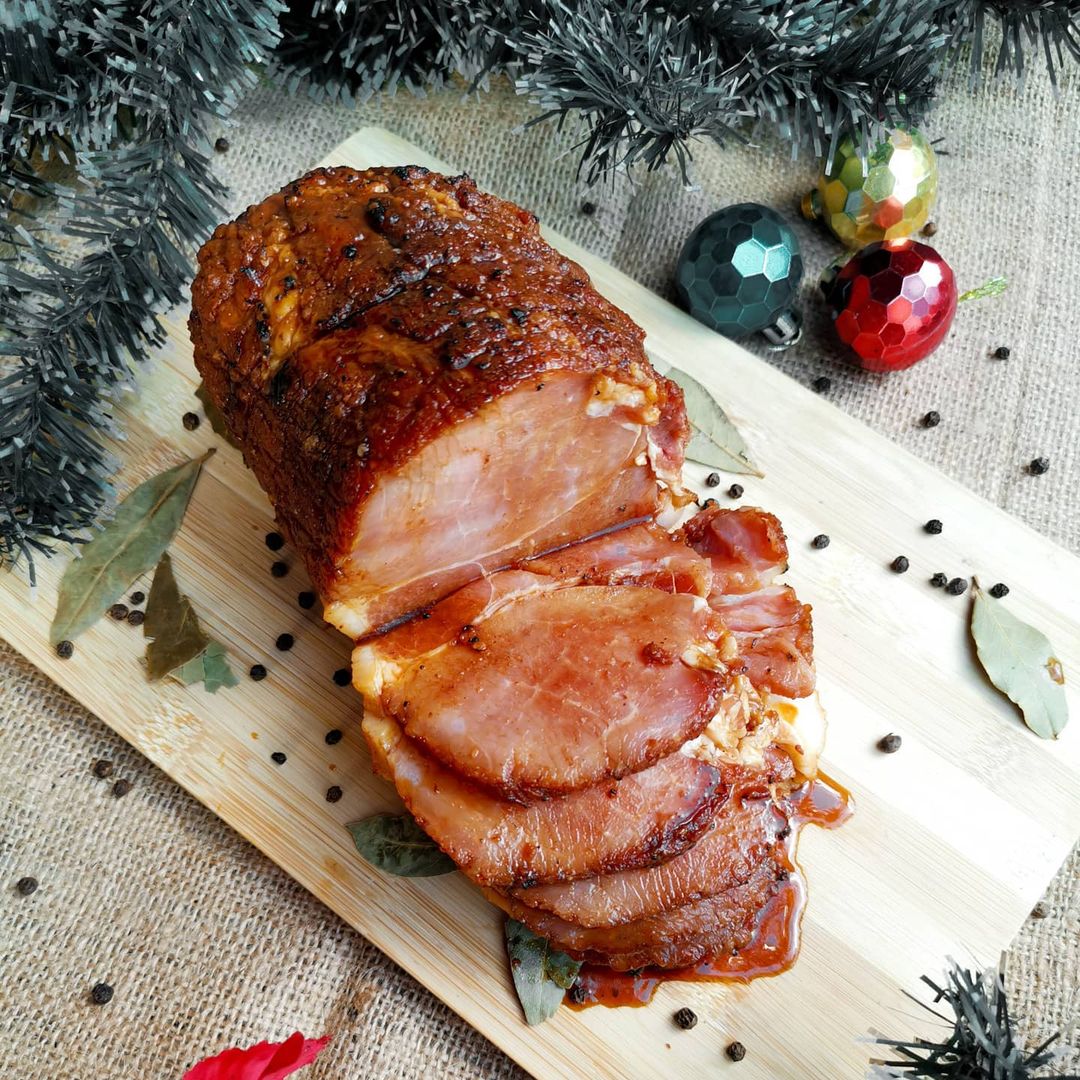
Image credit: @blehtot via Instagram
Christmas ham in the Philippines is cured, smoked pork leg with a fruity glaze – usually pineapple – that gives it a smoky-sweet taste.
It can be eaten with queso de bola as an appetizer or in a sandwich. Of course, no one can stop you from enjoying Christmas ham as it is.
If it has already been cured and smoked, it’s ready to eat. But be sure to check the label. Even if your Christmas ham is ready-to-eat, though, you can still cook it as you wish.
This traditional Filipino Christmas food is sold in grocery stores and is only available during the Christmas season.
6. Pancit – a Filipino celebration staple that symbolizes long life
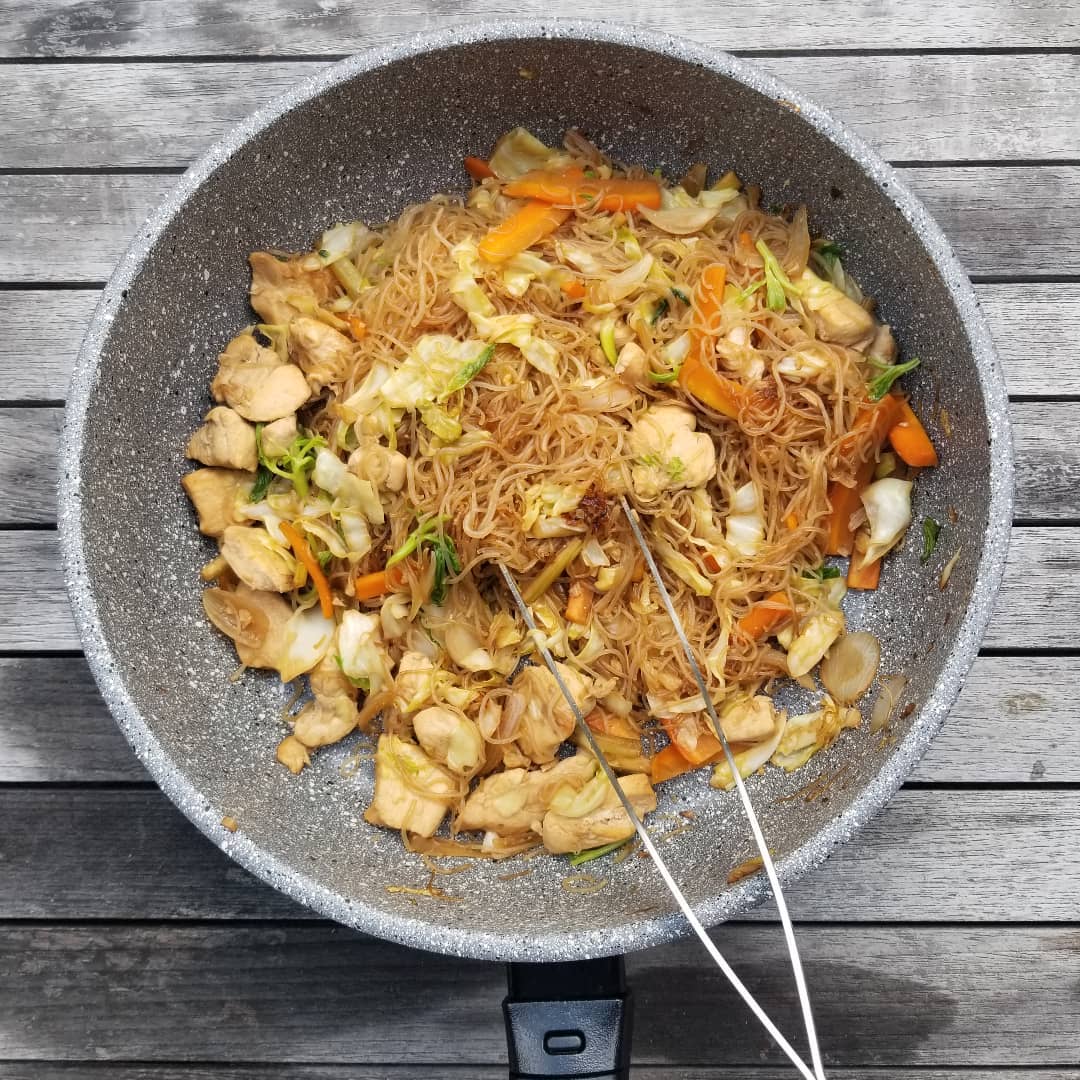
Pancit bihon
Image credit: @sharlenewhitaker via Instagram
Pancit, or stir-fried rice or egg noodles, is a Filipino celebration staple. Its main ingredient, long noodles, is said to bless people with long life.
There are plenty of types of pancit in the Philippines, such as canton and sotanghon. But the most popular pancit for celebrations would be pancit bihon, thin rice noodles stir-fried with carrots, cabbage, green beans, and meat.
Some families also prefer substituting the usual pancit variants with pancit Malabon which is thicker rice noodles in orange palabok sauce topped with shrimp, cuttlefish, sliced hard-boiled eggs, and crushed chicharon (deep-fried pork rinds).
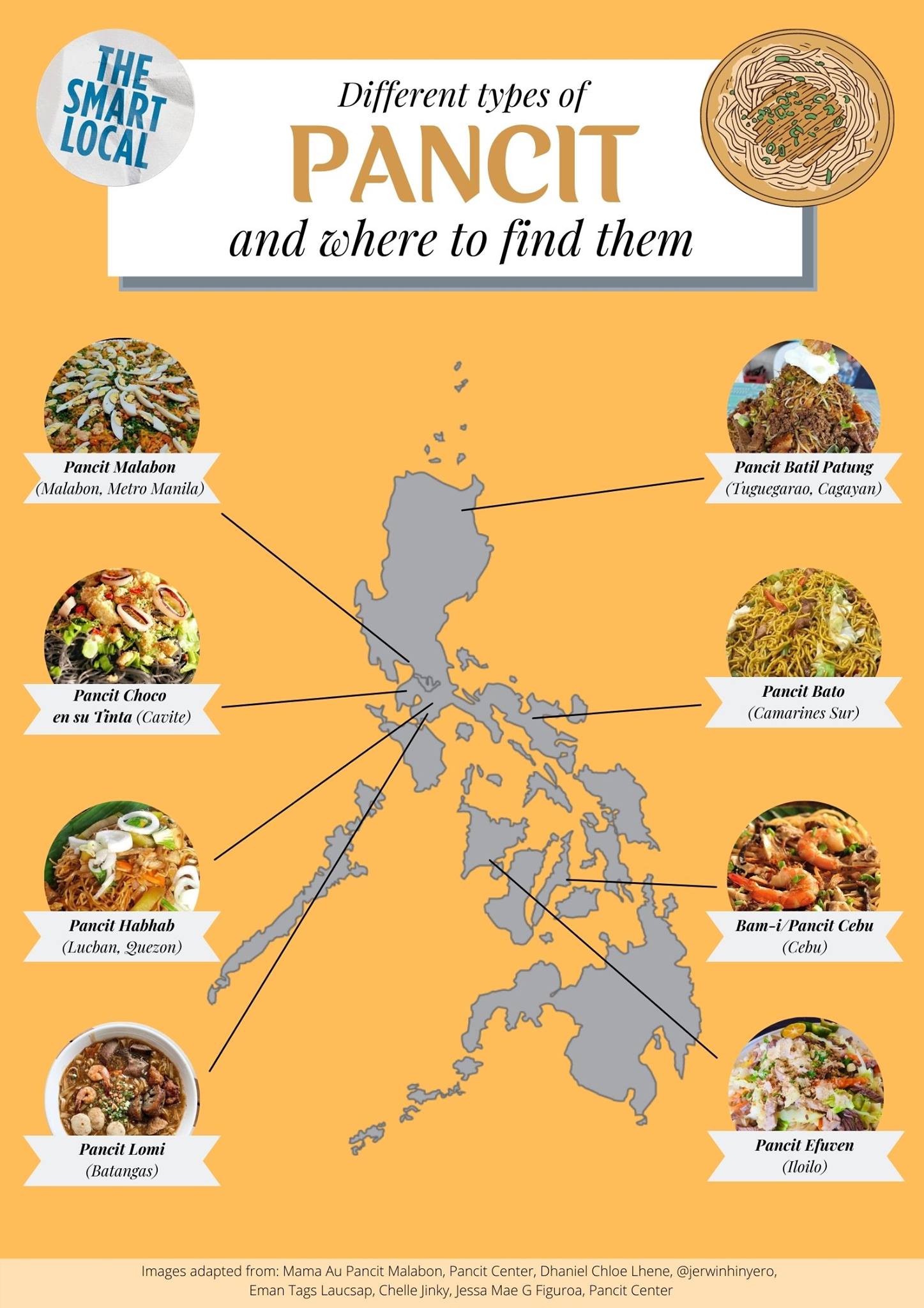
7. Filipino-style spaghetti – well-loved pasta dish by kids and kids-at-heart
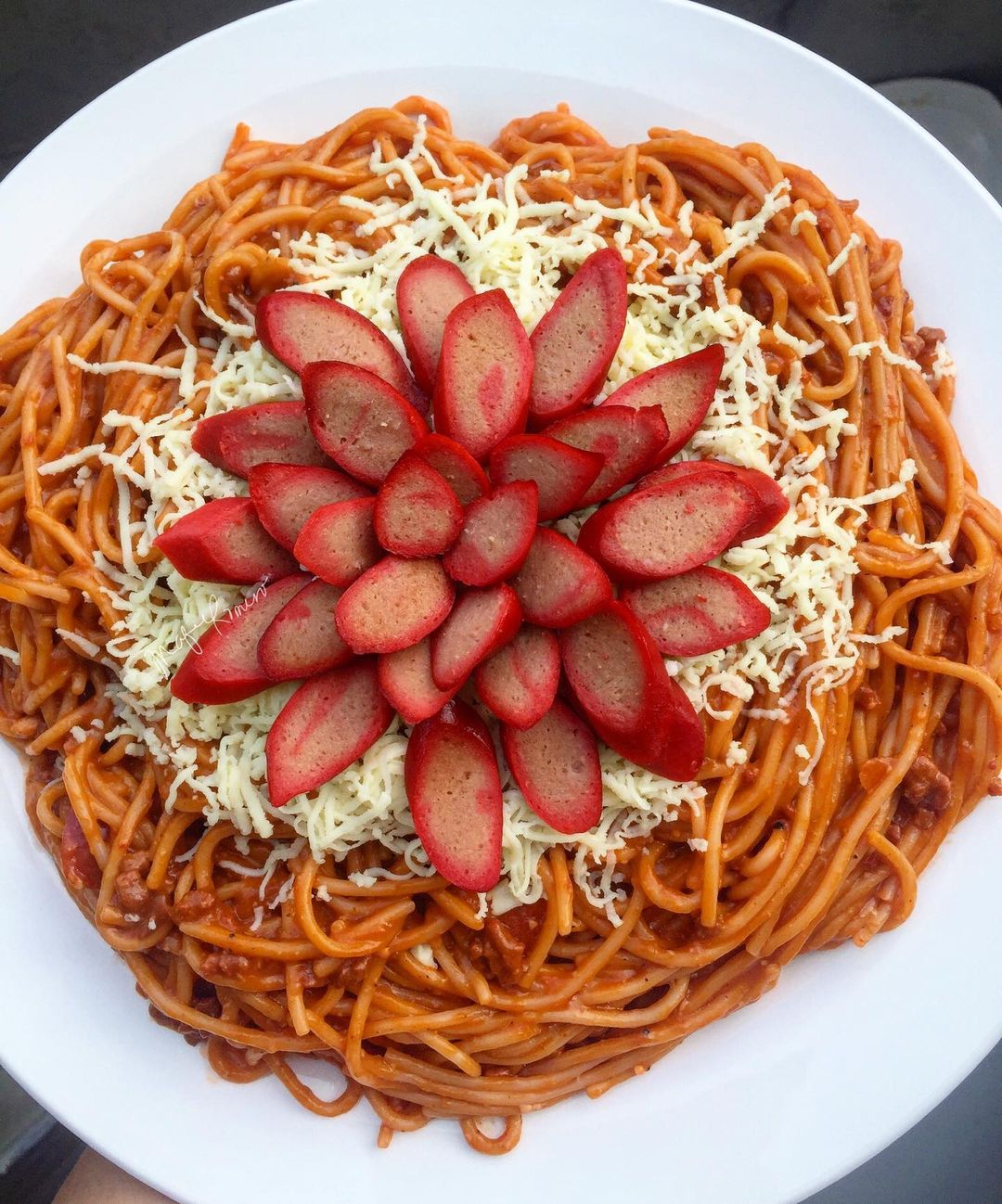
Image credit: @yourstruly.mafie via Instagramx`
Most kids prefer Filipino-style spaghetti bolognese, or simply spaghetti, over pancit so it’s always a good dish to have on the table during Christmas gatherings. Even some adults are nostalgic over it’s sweet taste.
Filipino-style spaghetti gets its sweetness from tomato sauce with a hint of banana ketchup and sugar. We’re also not shy to use commercial Filipino-style sauce which certainly makes noche buena preps a lot easier. To complete the sauce, make sure to add ground beef and hotdogs to the sauce and top with shredded cheese.
You’re also free to use a different type of pasta besides spaghetti. Some households prefer tube pasta such as penne.
8. Lumpiang Shanghai – crowd-favorite ground pork egg rolls
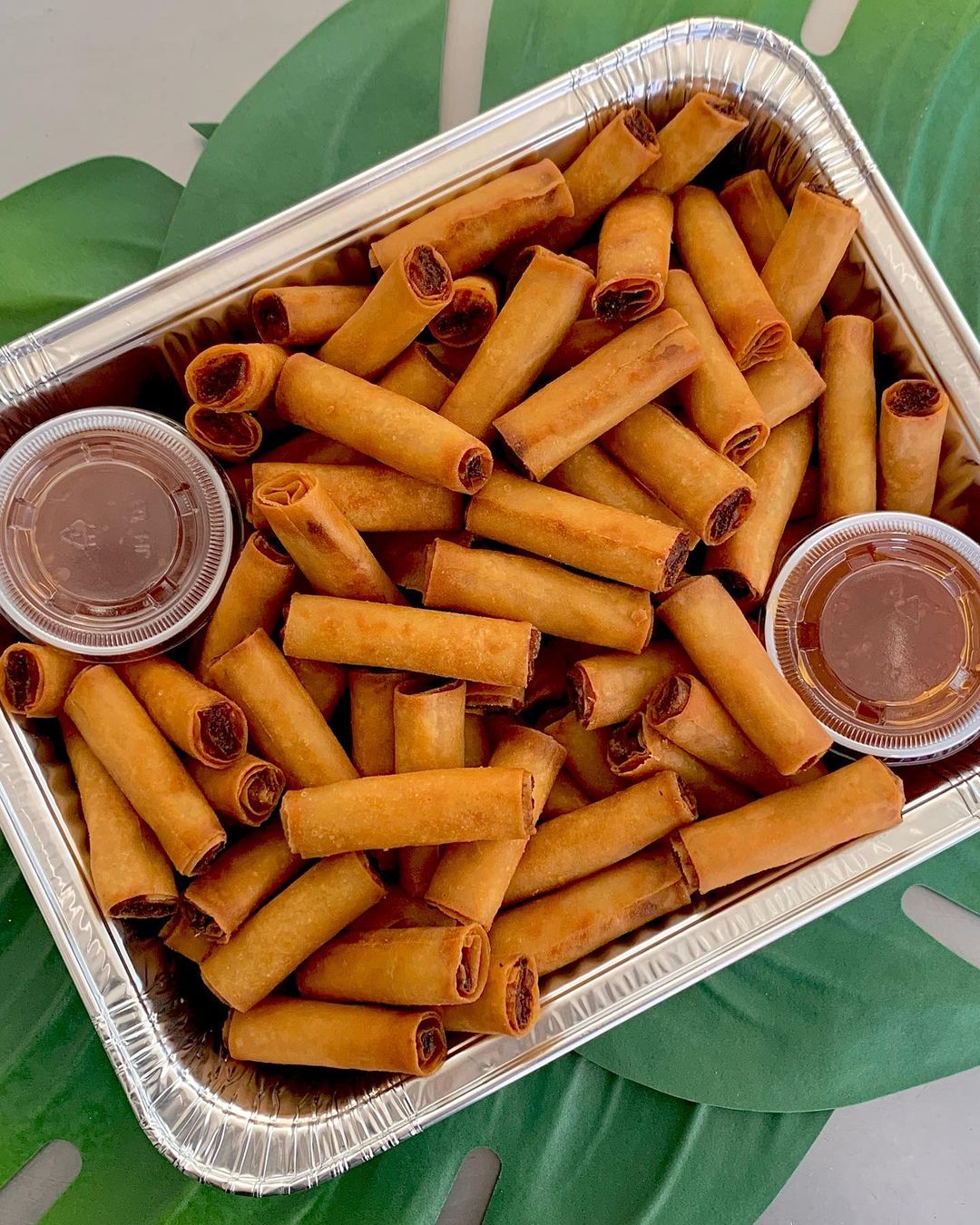
Image credit: @mamas_lumpia via Instagram
Like pancit, lumpiang Shanghai is also a Filipino celebration staple. In fact, it’s a running joke in the Philippines that you shouldn’t bother throwing a party if you don’t have lumpiang Shanghai.
This popular dish has simple ingredients – ground pork with minced carrots and garlic and seasoned with salt and pepper. This is then wrapped in store-bought egg white crepes and deep-fried until golden brown and crispy.
Lumpiang shanghai’s meaty taste makes it the perfect vessel for different types of sauces. It can be dipped in sweet banana ketchup, sweet chili sauce, or lechon sauce.
As this traditional Filipino Christmas food is a crowd-favorite finger food, it usually runs out first during celebrations.
9. Lechon – whole pig roasted over charcoal

Image credit: @graceparkdining via Instagram
Having lechon at the center of your noche buena table usually means you’re well-off, as you’re making just one dish out of a whole pig.
This traditional Filipino party dish can be bought from lechon businesses peppered around the country. However, the most popular places to get good lechon are La Loma in Quezon City and Carcar in Cebu.
Some families in provinces where there’s space for a charcoal fire big enough for a whole pig also cook their lechon themselves.
If a whole roast pig is too much of a commitment, it can also be substituted with cochinillo (roast suckling pig) or roasted pork belly.
10. Barbecue – different parts of pork and chicken grilled in skewers
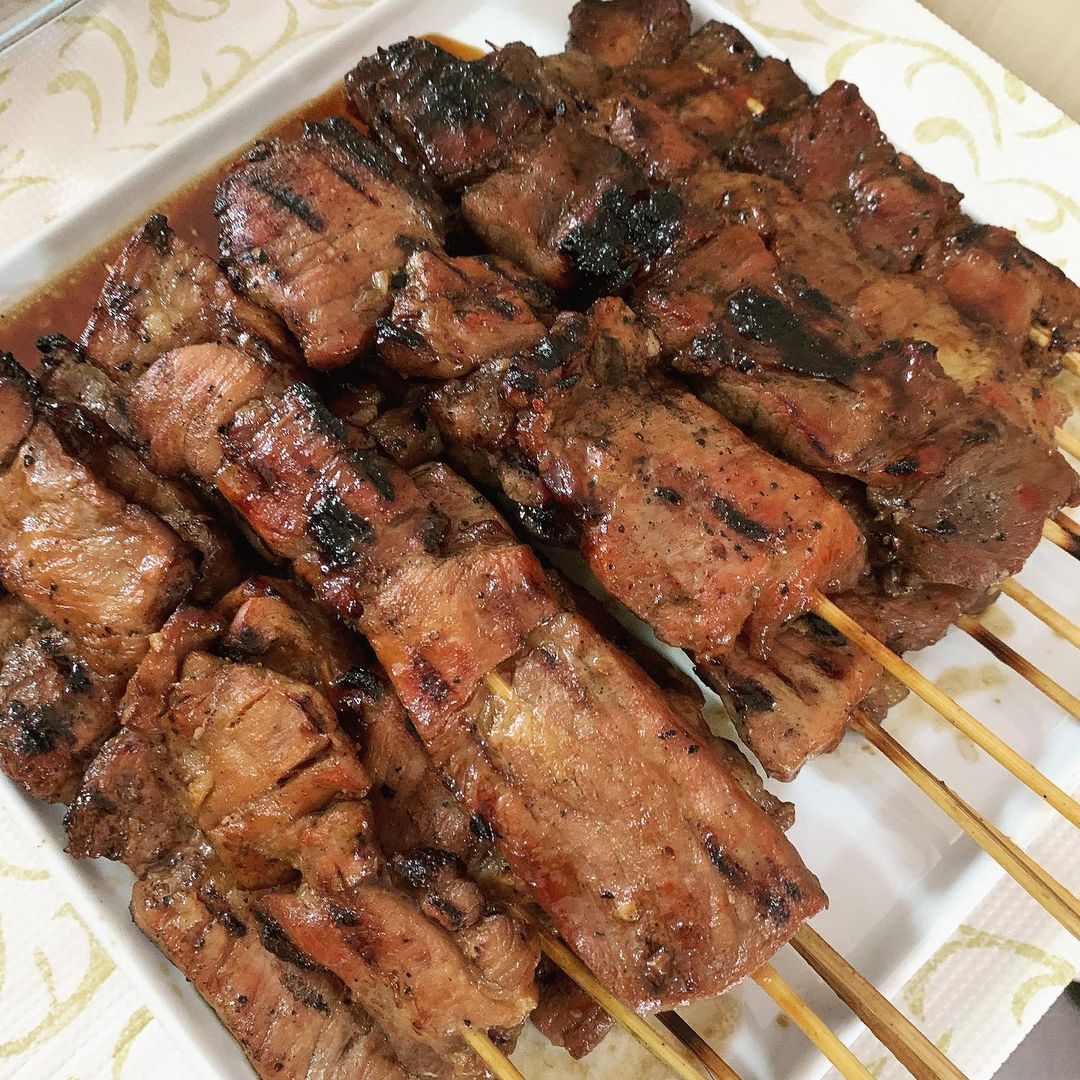
Pork barbecue
Image credit: @madcravingsdiary via Instagram
Barbecue in the Philippines is unlike barbecue in the rest of the world and not only because it’s in skewers.
Besides pork meat, it can include parts of the pig such as the large intestines, lungs, ears, and solidified blood. Chicken feet, head, neck, and intestines can also be barbecued. These are usually marinated in a homemade sauce made of soy sauce, banana ketchup, calamansi (Philippine lime) juice, garlic, brown sugar, and black pepper.
Family members usually bond while preparing the skewers and grilling the meat over charcoal on Christmas Eve. However, you can also find Pinoy barbecue on the streets on regular days.
This traditional Filipino Christmas food can be enjoyed by itself or with a dipping sauce which is typically made with vinegar and onions.
11. Embutido – Filipino meatloaf that can have a polarizing ingredient

Image credit: @kawalinimamu via Instagram
Embutido is a Filipino meatloaf that typically uses ground pork. Its other ingredients vary per household but some of the common additions are red and green bell peppers, carrots, and pickle relish for a sweet, tangy kick.
For special occasions such as Christmas, you can also add cheese, hotdogs, and hard-boiled eggs to get a colorful, presentation-worthy cross-section. However, an embutido ingredient that’s notorious for polarizing Filipinos is raisins which is added for a hint of sweetness.
However you make your embutido, we can all agree that it’s best dipped in either banana ketchup or sweet chili sauce.
12. Menudo – pork and liver stewed in tomato sauce
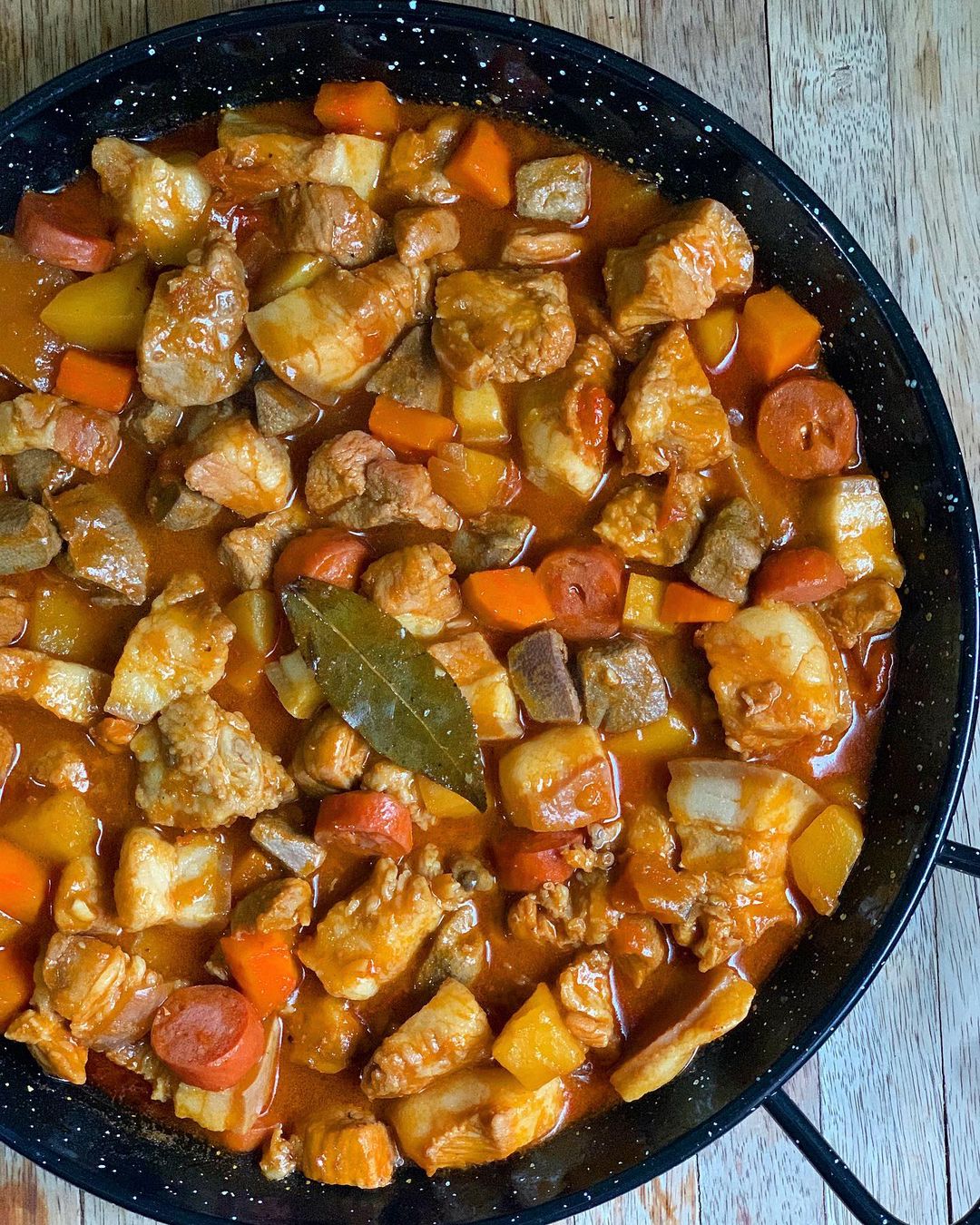
Image credit: @ps_i_lovefood via Instagram
Filipino meals are not complete without rice and so are Filipino festivities. With our cuisine’s exquisite flavors, there are every day ulams (dishes) that can easily be Filipino Christmas foods.
These include menudo which is pork and liver stewed in tomato sauce with carrots and potatoes. Its savory and slightly tangy and earthy flavor makes it great to pair with a steaming bowl of rice. And you guessed it, slices of hotdogs are sometimes thrown in there for a pop of color.
If you’re not a fan of pork, you can also opt for mechado or afritada, which are often confused with each other along with menudo. To put it simply, mechado uses beef while afritada can have chicken, beef, or pork.
13. Kaldereta – tomato-based goat meat stew
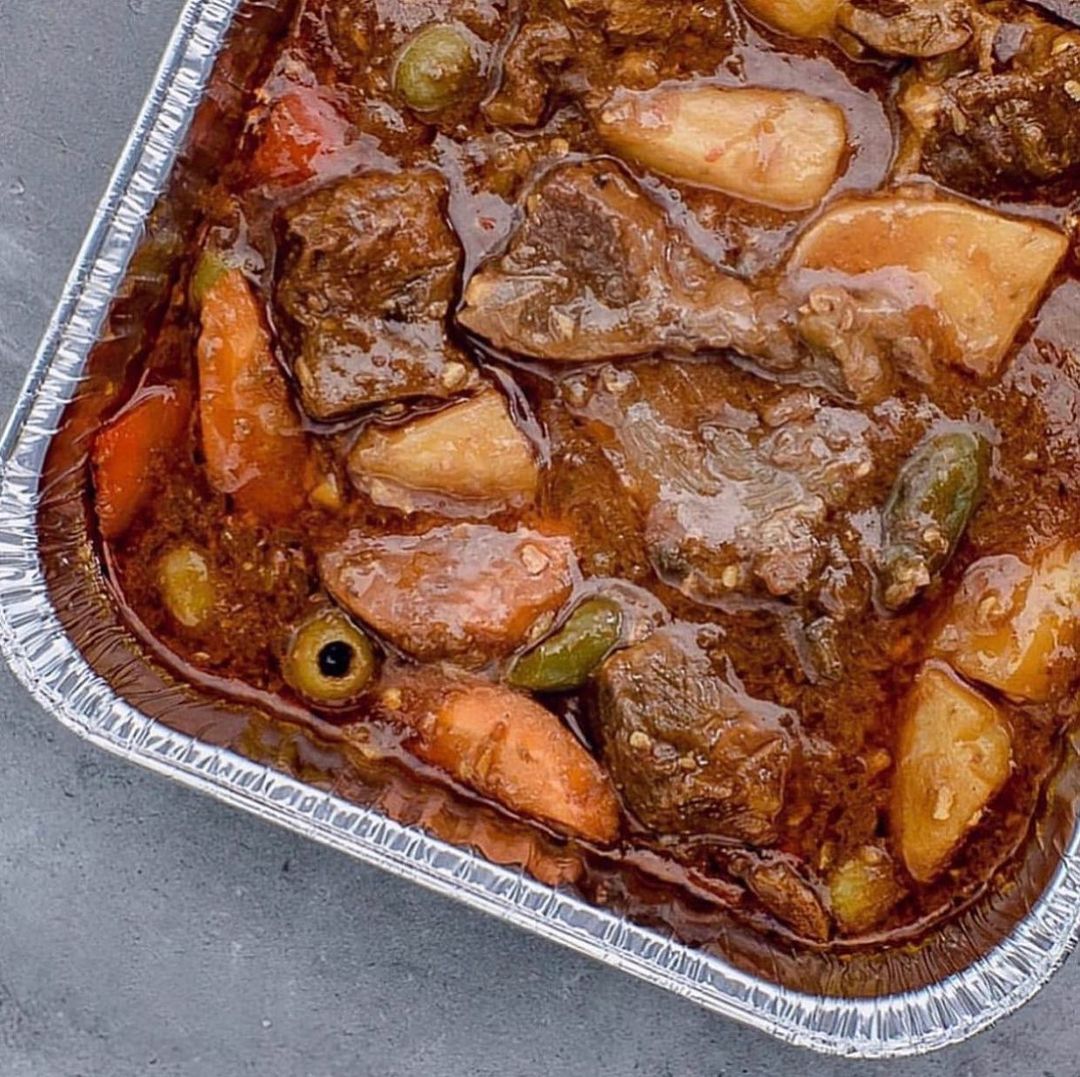
Image credit: @_kcskitchen via Instagram
While it’s also a tomato-based stew, kaldereta is distinct from the 3 dishes mentioned above. Its main ingredient makes it hard to confuse with other dishes.
Typically, kaldereta uses goat meat, but it can also be substituted with big chunks of beef when goat meat is hard to come by. The dish also includes potatoes, carrots, and bell peppers.
Liver spread can also be added to the stew’s base for a well-rounded flavor.
14. Rellenong bangus – stuffed milkfish that’s a labor of love
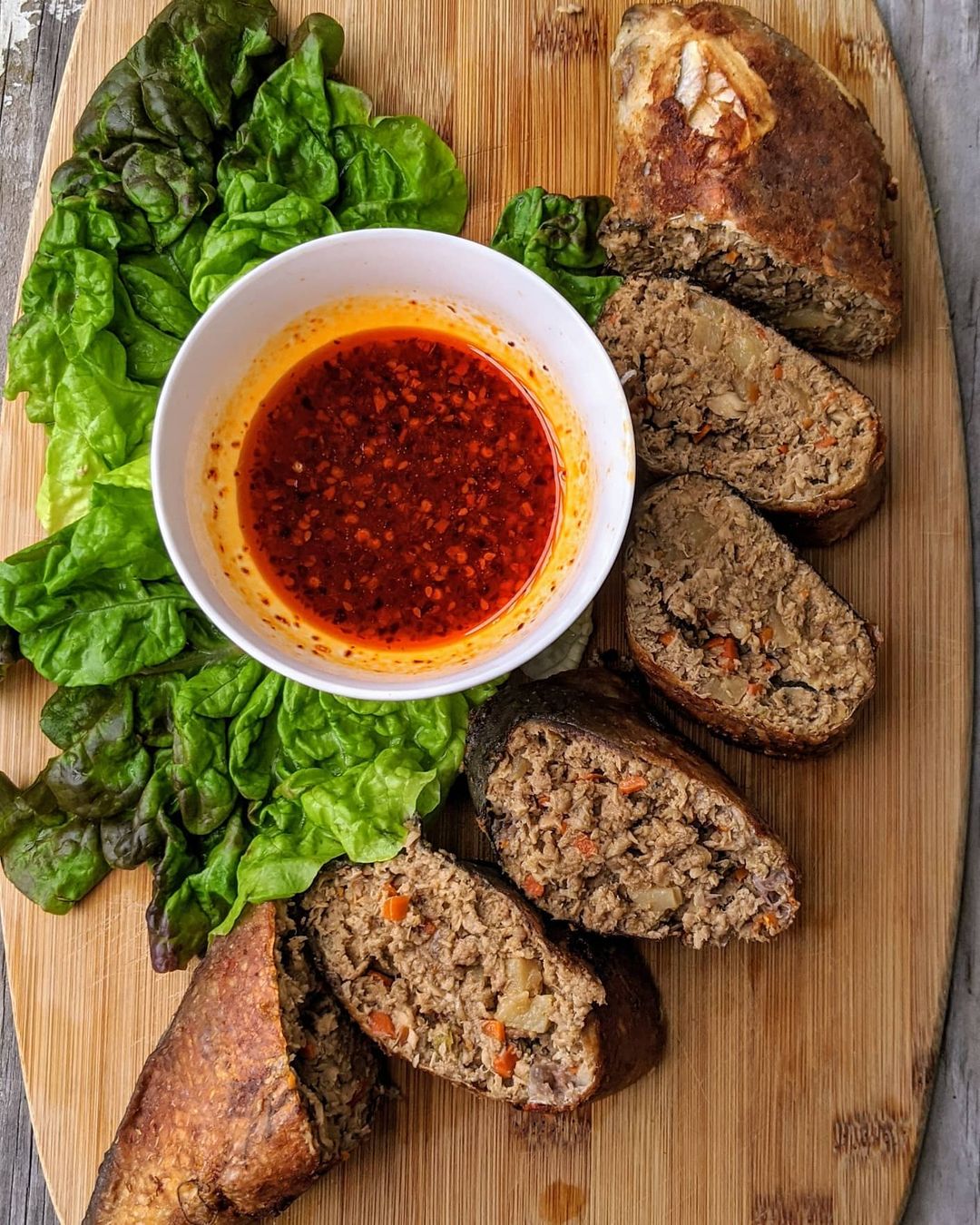
Image credit: @ivyscravings via Instagram
Making homemade rellenong bangus is a labor of love, which is why it is often only served during special events.
The process begins by delicately removing the flesh from the milkfish while keeping the skin intact. The meat is boiled and then rid of its many bones, for which milkfish is notorious.
Next, the fish meat is stir-fried with soy sauce, a touch of tomato paste, and an array of ingredients including green peas, bell peppers, raisins, and pickle relish. This flavorful mixture is then carefully stuffed back into the fish’s skin which is then baked to perfection.
If the idea of preparing rellenong bangus from scratch feels too complicated, you can also get it from Filipino restaurants and food businesses in your area.
15. Lechon manok – Filipino-style roasted chicken
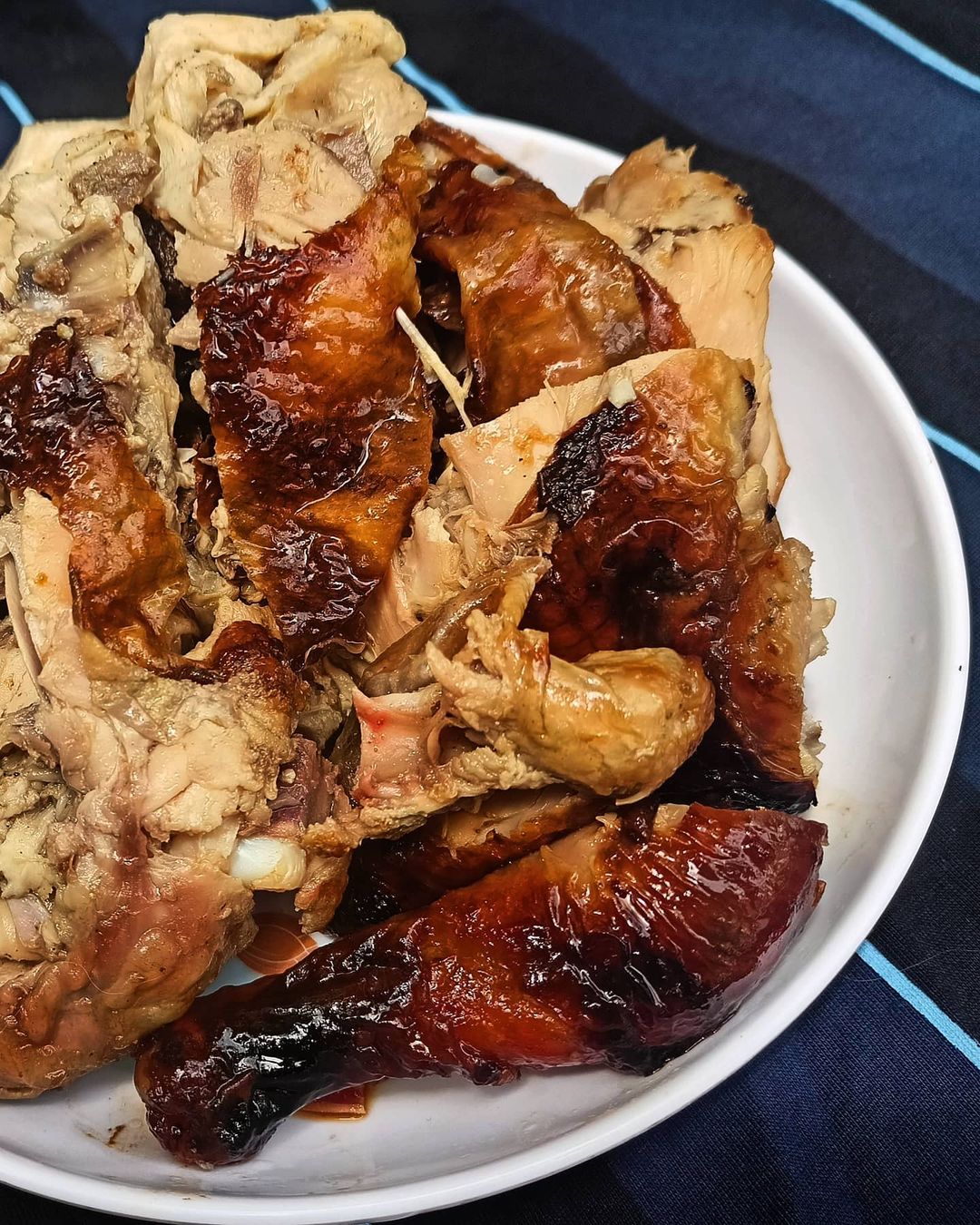
Image credit: @fatboiyummy via Instagram
Filipino-style roasted chicken, or lechon manok, typically boasts fragrant pandan leaves and a generous amount of peppercorns for flavor. It’s traditionally cooked over charcoal which infuses it with a delightful smoky taste.
For a simpler approach to this Filipino celebration food, you can also simply roast chicken in an oven and marinate it according to your preferences.
But if the holiday season has you overwhelmed with tasks, there are plenty of lechon manok stalls – from chain establishments to local businesses – everywhere, making it easy to pick one up.
16. Leche flan – custard dessert with a clear caramel glaze
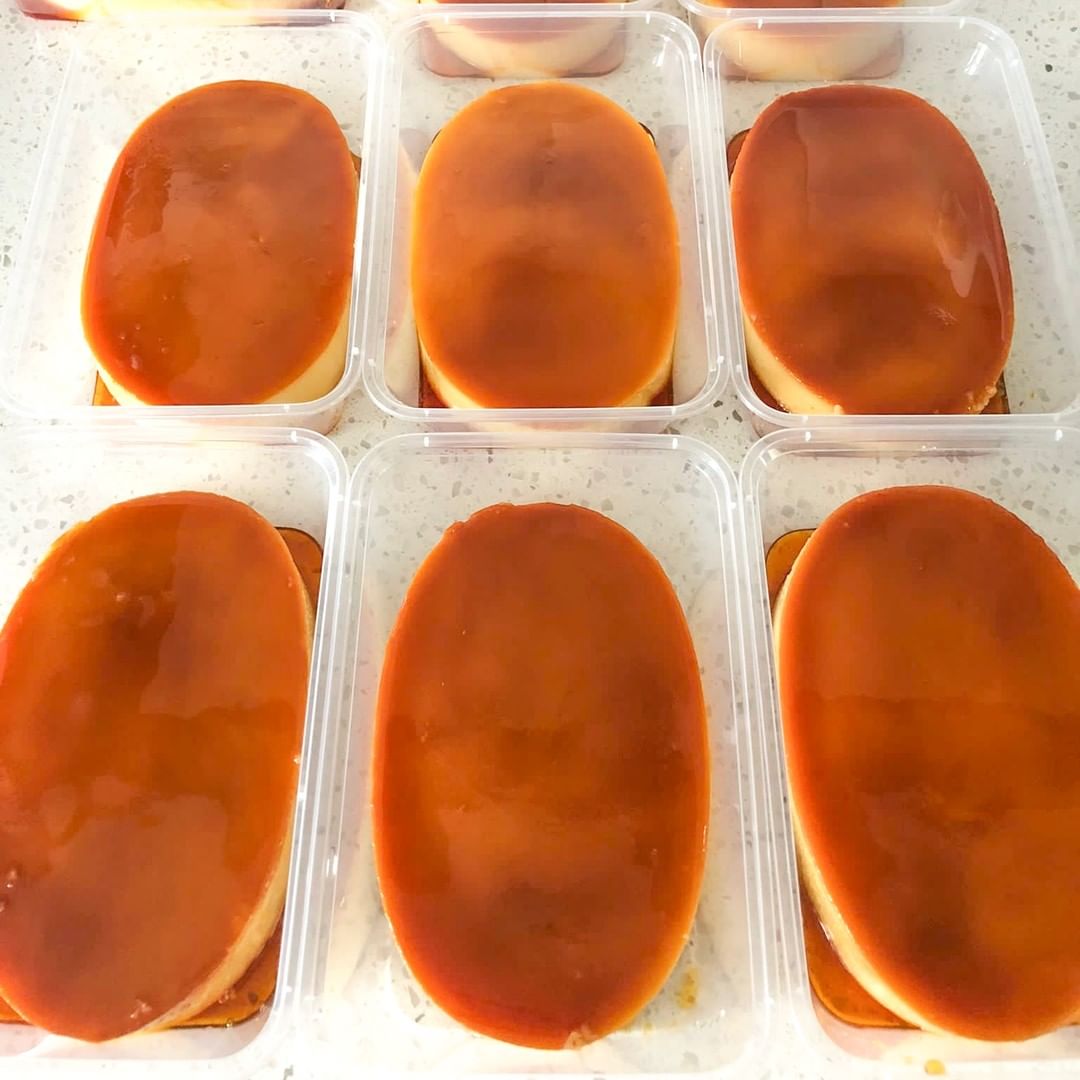
Image credit: @azucarbakery.m via Instagram
The traditional Filipino Christmas food leche flan is also quite difficult to prepare, which is why it’s usually reserved for celebrations like Christmas.
It’s sweet and creamy custard made with egg yolks, condensed milk, and evaporated milk topped with caramel syrup made with white sugar. Lemon zest is also added to make it more aromatic.
While it has simple ingredients, the process of steaming and making the glaze is easy to mess up for beginners.
Fortunately, it can also be bought from Filipino restaurants and small food businesses for those who want to skip all the trouble of preparing this custard dessert but still find it hard to resist.
17. Salad – sweet, fruity, and cool dessert of different types
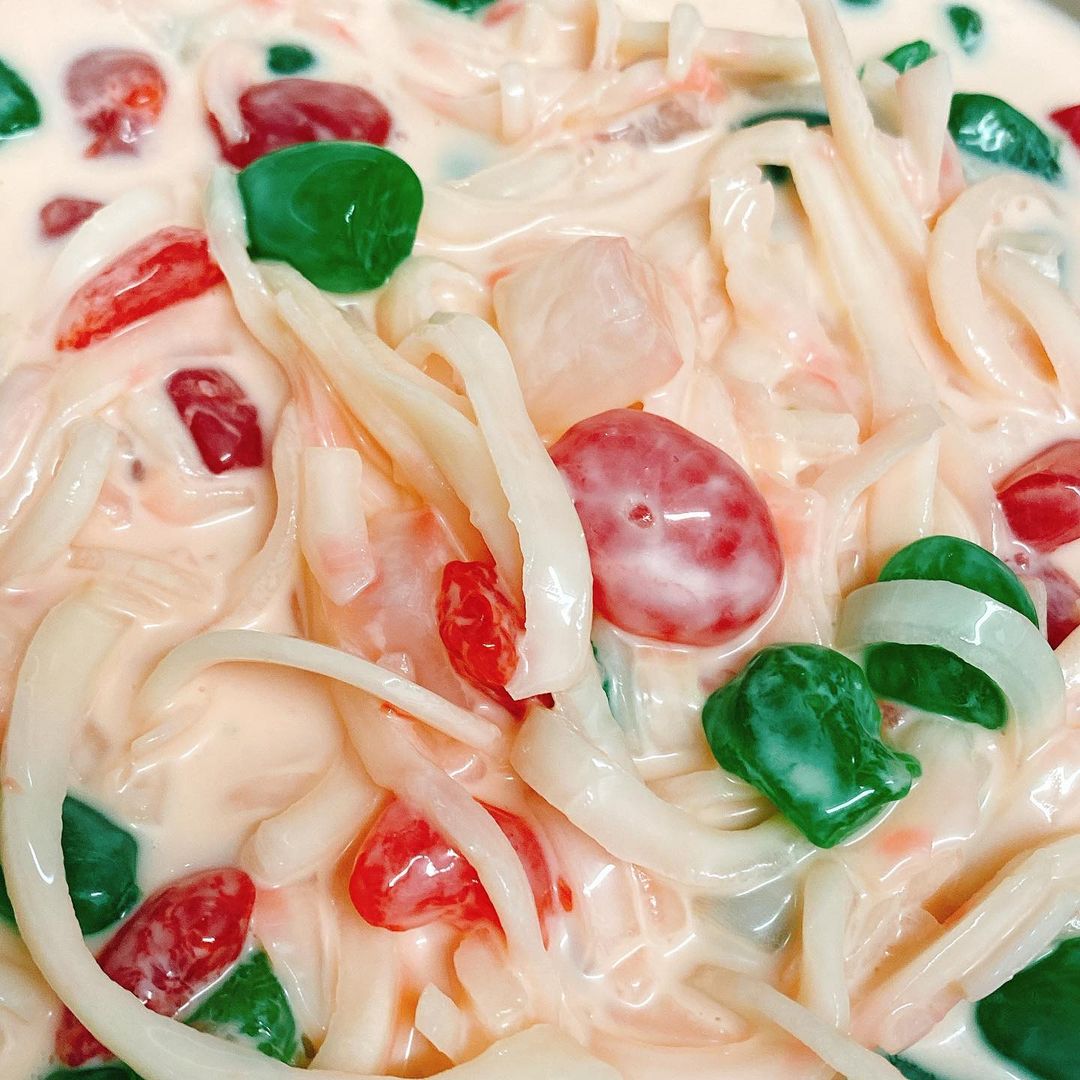
Buko salad with kaong and nata de coco
Image credit: @ryukenphajed via Instagram
Salad in the Philippines usually refers to a sweet dessert instead of leafy greens with a savory dressing. There are different types such as fruit salad, buko (coconut) salad, and macaroni salad.
These sweet salads’ common ingredients are all-purpose cream, condensed milk, sago (tapioca pearls), nata de coco (chewy coconut jelly), kaong (cooked sugar palm fruit in syrup), and fruit cocktail – canned preserved fruits, usually pineapple, papaya, and cherries.
Once the ingredients are mixed, the salad is then refrigerated to make a cool, refreshing dessert.
Traditional Filipino Christmas foods
So you and your friends or family can easily check if you’ve tried all of these traditional Filipino Christmas foods, we’ve prepared a downloadable poster for you below.

Restaurants that offer different cuisines for takeout and delivery have given noche buena a twist as well as made it more convenient. However, traditional Filipino Christmas foods remain the best, especially when prepared and enjoyed with our loved ones.
Tap closer into your Filipino culture this holiday season and check out these Filipino Christmas traditions. You can also start preparing your home’s holiday look with the help of these online Christmas decor shops in the Philippines.
Cover image adapted from:
Article originally published on 20 September 2021, last updated on 29 September 2023.
